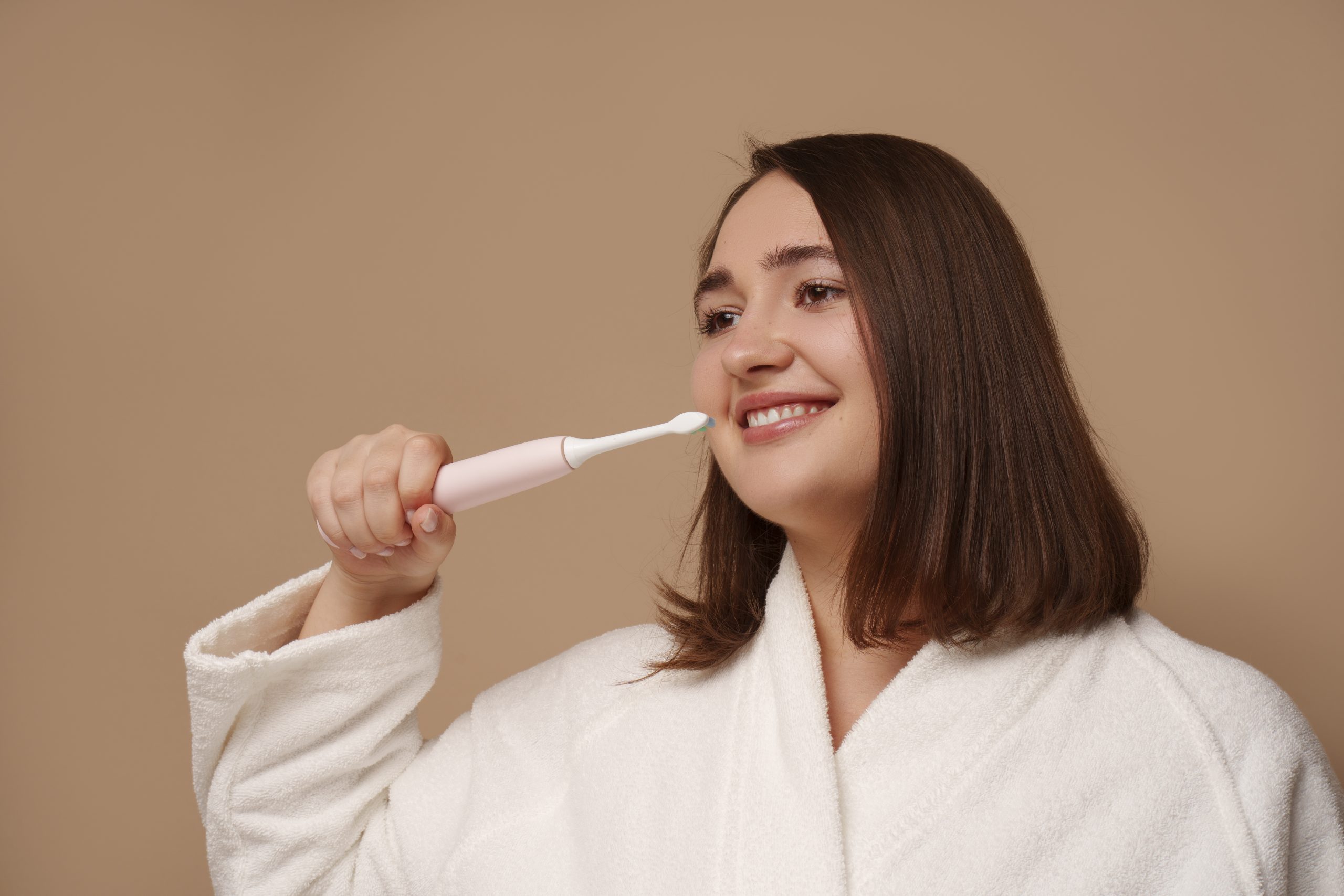Many people feel uncertain about the proper sequence for their daily oral care routine, and this confusion is quite common. Patients often ask, “What is the proper order for brushing, flossing, and rinsing?” It’s a valid question that even raises debate among dental professionals. The sequence you follow can influence how effectively each step removes plaque and protects your teeth.
Understanding why order matters helps you get the most benefit from your daily routine. Research suggests that the sequence affects how well fluoride reaches between teeth and how thoroughly debris gets removed. This guide provides evidence-based recommendations to help you optimise your oral hygiene efforts at home. Remember, maintaining a consistent dental routine matters more than getting every single step exactly right.
Contents Navigation
Summary of The Content
- Understanding evidence-informed sequencing of oral hygiene steps may help enhance your daily dental care routine. The order in which you floss, brush, and rinse may affect how well each step removes plaque and protects your teeth.
- Flossing before brushing may help improve fluoride delivery to interdental areas. When you remove debris first, the fluoride in your toothpaste may better reach the spaces between your teeth, potentially providing additional protective benefits.
- Brushing for two minutes with proper technique helps remove plaque from all tooth surfaces. Using circular motions at a 45-degree angle to your gums can help clean effectively while protecting your enamel.
- The timing of rinsing can affect how long fluoride remains on your teeth. Spitting out excess toothpaste rather than rinsing immediately may allow fluoride to provide extended protection.
- Adapting your dental routine to your needs and maintaining consistency matter more than following every step precisely. Regular practice of your daily oral hygiene habits supports long-term oral health.
Building a Good Oral Hygiene Routine: Why Sequence Matters
If you’ve wondered, “What is the proper order for brushing, flossing, and rinsing?” This is a common question many patients have about their daily dental care. Understanding why the order of your oral hygiene routine matters can help you get the most from your dental care routine.
- Plaque Formation and Bacterial Activity:
Plaque forms continuously throughout the day as a sticky film of bacteria builds up on your teeth and gums. This bacterial buildup can lead to tooth decay and gum disease if not removed regularly through proper oral hygiene practices. - Coordinated Steps for Enhanced Effectiveness:
Each step in your oral care routine works together to remove plaque and maintain good oral health. When debris is removed in the proper sequence, subsequent steps may become more effective at reaching tooth surfaces and the gum line. - Fluoride Absorption and Retention:
The order in which you complete your routine can affect how well fluoride toothpaste protects your tooth enamel. Research suggests that removing food particles and plaque before brushing may help fluoride reach tooth surfaces and areas along the gum line more effectively. This approach may potentially support enamel strength over time, though individual results can vary. - Sequential Debris Removal:
Completing steps in a logical sequence can help improve overall cleaning effectiveness. For example, using dental floss first may dislodge food and bacteria from between teeth, which can then be removed more thoroughly during brushing with fluoride toothpaste. - Impact on Overall Oral Health:
Maintaining a consistent oral hygiene routine that includes proper sequencing may help reduce the risk of oral health problems such as cavities, gingivitis, and gum disease. While individual results vary, consistent daily oral care plays an important role in supporting teeth and gums over the long term.
By understanding how different oral hygiene practices help remove plaque buildup and protect your teeth, you can develop an effective routine tailored to your needs.
The Recommended Order: Floss First, Brush Second, Rinse Last
The sequence of your oral hygiene steps can influence how effectively each product works. The order you follow may affect how well fluoride reaches all tooth surfaces and how thoroughly plaque is removed from your mouth. While consistency matters more than getting every detail exactly right, understanding the evidence-based sequence can help you make the most of your daily routine.
Step 1: Use Dental Floss First
Flossing before brushing may help improve fluoride delivery to the spaces between your teeth. When you floss first, you dislodge trapped food particles and plaque from interdental areas where your toothbrush may not reach as easily. This preparation may allow the fluoride in your toothpaste to better contact these cleaned surfaces during brushing, potentially enhancing its protective benefits. This step can make your brushing step more thorough by removing debris that might otherwise block effective cleaning.
Step 2: Brush Your Teeth Properly
Brushing for two minutes is generally recommended to help clean tooth surfaces, as shorter durations may leave plaque behind. Hold your toothbrush at a 45-degree angle to your gums and use circular motions rather than aggressive back-and-forth scrubbing. Work systematically around your mouth—outer, inner, and chewing surfaces—paying particular attention to the gum line and the back molars, which are commonly missed. Soft-bristled brushes are generally recommended to protect enamel and gums, whether you choose a manual or an electric option (both can be effective with proper technique).
Step 3: Rinsing and Mouthwash Use
After brushing, you might instinctively reach for water to rinse your mouth thoroughly. However, rinsing immediately can wash fluoride from your toothpaste before it fully strengthens your enamel. Many dental professionals suggest spitting out excess toothpaste rather than rinsing with water straight away. This approach allows fluoride to remain on your teeth longer, potentially providing additional protection against decay.
Mouthwash falls into two main categories: therapeutic and cosmetic, each serving different purposes for your oral health. Therapeutic mouthwashes contain active ingredients like fluoride or chlorhexidine, which can help reduce plaque and strengthen enamel. Cosmetic mouthwashes primarily freshen breath but don’t offer the same preventive benefits as therapeutic options. Using mouthwash at a different time than brushing—perhaps after lunch—helps prevent rinsing away concentrated fluoride.
Additional Steps for Complete Oral Hygiene
Beyond the fundamental sequence of flossing, brushing, and rinsing, several complementary practices can enhance the overall effectiveness of your oral hygiene routine. These additional steps address areas that standard brushing and flossing may not fully cover, creating a more comprehensive approach to oral care. Understanding when and how to incorporate these practices can help you build a routine that supports your lifestyle and oral health needs.
Don’t Forget to Brush Your Tongue
Your tongue harbours bacteria, dead cells, and food particles that can contribute to bad breath throughout the day. These accumulations can transfer back onto your freshly cleaned teeth, potentially reducing the effectiveness of your brushing efforts. Cleaning your tongue can help reduce the bacterial load in your mouth and may improve breath freshness. While not absolutely mandatory, tongue cleaning is a beneficial addition to your oral hygiene routine.
To clean your tongue properly, start at the back and work forward using steady pressure. You can use either your toothbrush or a dedicated tongue scraper for this task. Some research suggests tongue scrapers may help remove debris, though both tools can work well when used consistently and properly. The key is choosing whichever tool you’ll use consistently as part of your daily routine.
Interdental Cleaning Options
Traditional dental floss works well for many people, but it isn’t always the most practical option for everyone. Interdental brushes may be more comfortable for cleaning wider gaps between teeth or areas affected by gum recession. Water flossers can make interdental cleaning easier for people with braces, bridges, or limited hand dexterity. Each tool is suited to specific situations where it might work better than standard floss for removing plaque and debris.
Choosing the right interdental cleaning tool depends on your specific oral health needs and what you’ll actually use consistently. Interdental brushes come in various sizes to fit gaps of different widths, making them adaptable to your mouth’s unique gaps. Water flossers might be a good option if you find traditional flossing difficult or uncomfortable to maintain. The most effective tool is simply the one you’ll use regularly as part of your daily routine.
Timing Considerations
Your morning and evening oral hygiene routines serve distinct purposes that support your dental health throughout the day. Morning brushing removes bacterial buildup that accumulates overnight, while evening cleaning is particularly important because saliva production decreases during sleep. A complete routine typically takes five to seven minutes, including two to three minutes for flossing and two minutes for brushing your teeth. If you’ve consumed acidic foods or drinks, waiting 30-60 minutes before brushing can help protect your enamel from potential damage.
Adapting Your Dental Care Routine to Your Needs
Your oral hygiene routine should adapt to your needs and circumstances, as different dental situations may benefit from specific approaches or modifications.
- Sensitive Teeth:
If you experience tooth sensitivity, using a desensitising toothpaste with fluoride and applying softer pressure when you brush your teeth may help reduce discomfort over time. - Braces and Orthodontic Appliances:
Patients with braces may find interdental brushes or a water flosser helpful for cleaning around brackets and wires, where dental floss can be difficult to manoeuvre. - Gum Disease Management:
If you have gingivitis or gum disease, continue brushing and flossing, even if you experience some initial bleeding. Proper oral hygiene may help reduce inflammation and support gum health over time. - Dry Mouth Conditions:
Those experiencing dry mouth due to certain health conditions or medications may benefit from alcohol-free mouthwash and fluoride toothpaste. These products can help protect tooth enamel without further drying oral tissues. - Age-Specific Considerations:
Children require supervision during daily brushing to help them develop good oral hygiene habits and learn proper technique as they grow. Elderly adults may find adaptive tools with larger handles easier to use if dexterity becomes challenging with age. - Pregnancy-Related Changes:
Some research has identified associations between periodontal disease and certain pregnancy outcomes. Pregnant patients should discuss their individual oral health needs with their dentist and medical care providers. Maintaining a good oral hygiene routine and attending routine dental exams during this time is essential. - Medical Conditions:
Patients with diabetes, heart disease, or other health conditions should speak with their dentist and medical care providers about their oral health. Clinical studies suggest associations between certain oral health conditions and general health, though individual circumstances vary significantly.
Results vary depending on individual oral health and consistency. For personalised guidance, consider discussing your specific situation with your dentist.
Tips for Maintaining a Consistent Oral Hygiene Routine
Building a consistent oral hygiene routine can feel challenging, but small, practical changes often make the biggest difference. Here are evidence-based strategies that can help you maintain regular brushing and flossing habits:
- Link oral care to existing habits:
Attach your oral hygiene routine to something you already do consistently, such as brushing your teeth immediately after your morning shower or flossing right after dinner. This approach, known as habit stacking, can help make oral care feel like a natural part of your day rather than an additional task to remember. - Keep your supplies visible and accessible:
Store your toothbrush, floss, and toothpaste on your bathroom counter rather than in a drawer. When oral hygiene tools are readily available, you’re more likely to use them consistently. - Start with one small change:
Rather than trying to overhaul your entire routine at once, begin by adding just one new step—perhaps flossing before bed or using mouthwash in the morning. After this becomes part of your routine, you can add another step to strengthen your oral care habits. - Use simple tracking methods:
Consider marking a calendar, using a habit-tracking app, or placing a small chart in your bathroom to monitor your consistency. Many people find that seeing their progress motivates them to maintain their routine. - Adapt to your schedule and energy levels:
If mornings are rushed, focus on a quick but effective routine and reserve the more thorough cleaning for the evening when you have more time. There’s no rule that both sessions must be identical in length or thoroughness. - Set phone reminders for specific times:
If you tend to forget or get distracted, set a daily alarm or notification on your phone to complete your oral hygiene routine. - Anticipate common situations:
Keep a travel-sized oral care kit in your bag for days when you’re away from home. You can also keep floss picks in your desk drawer for convenient interdental cleaning during the day.
Establishing a consistent oral hygiene routine takes time and patience, but these practical strategies can help you build habits that support your long-term oral health. If you miss a session or occasionally skip a step, simply resume your routine at the next opportunity without self-criticism.
Final Thoughts
Understanding what is the proper order for brushing, flossing, and rinsing can help improve your daily oral hygiene routine. Flossing first, then brushing, followed by rinsing or using mouthwash, may provide better results. However, consistency matters more than achieving the ideal sequence every single time. Start with one small change rather than trying to overhaul your entire routine at once.
While a thorough home oral hygiene routine is the foundation of good dental health, regular dental check-ups complement your efforts. Professional cleaning and early detection of potential issues can support your at-home care. If you have questions about your oral hygiene routine or would like personalised advice, our team at Karrinyup Dental Centre is here to help. Taking a few additional minutes each day to care for your teeth is an investment in your long-term oral health.





